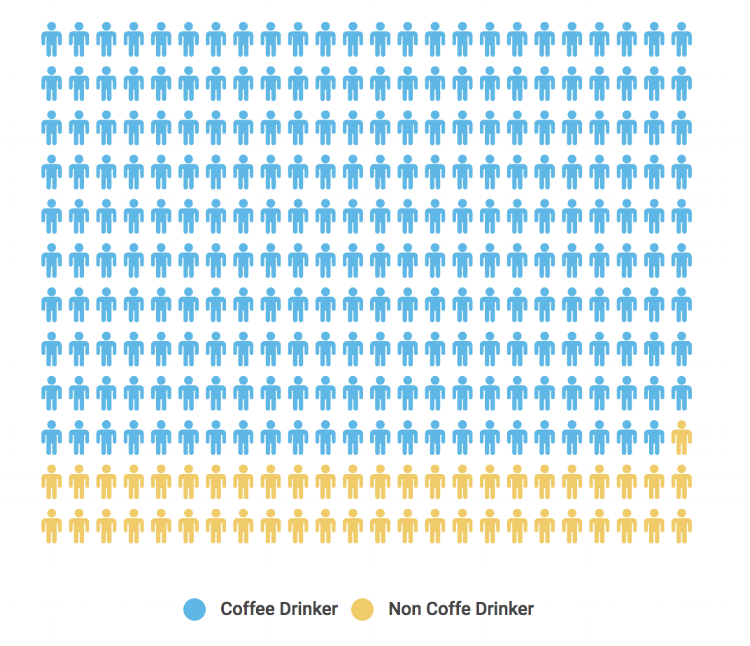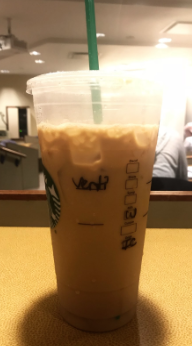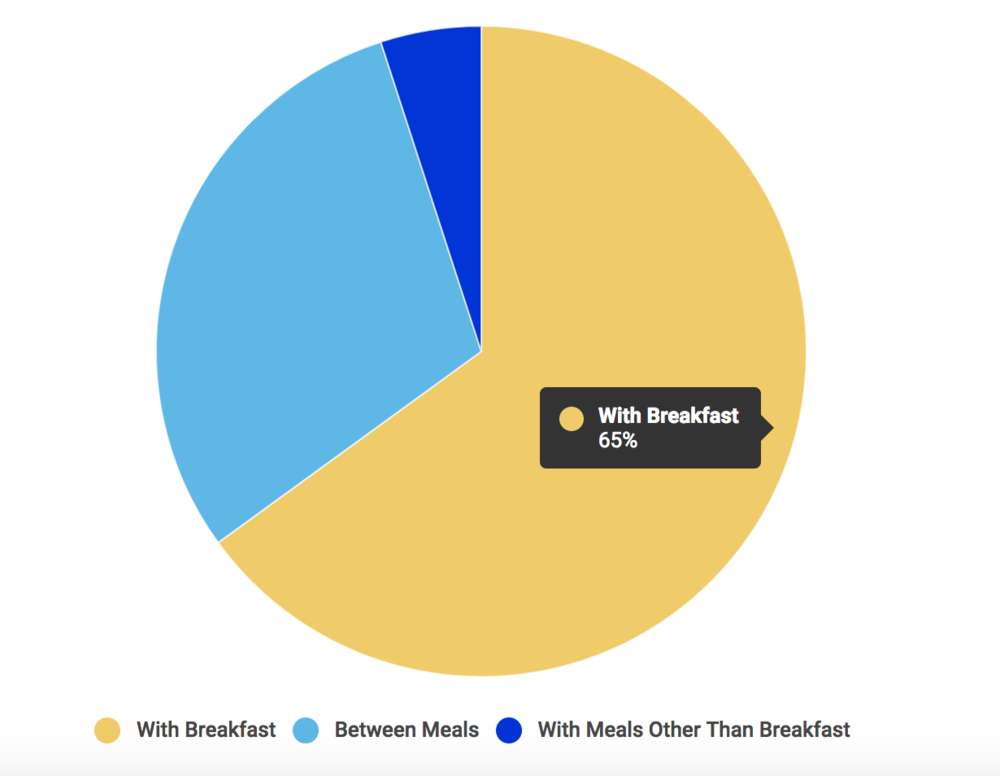By Camila Costa
Have you ever gone to your local coffee shop and the barista knows your name and order by heart?
College students have this happen on a daily basis. On a chaotic schedule going from class, to internships, to extra curricular activities and staying up until 4 a.m., whether in the library or out in the bars, majority of those students rely on coffee to keep them awake.
“I drink coffee to stay awake mostly, and I also really like the taste of it,” said Catherine Healey, public relations major.
According to the American Association of Retired Persons, the average American drinks three cups of coffee per day, which translates to 83 percent of coffee drinkers not being able to imagine their life without their java.

How Many Americans Drink Coffee?
Dana White, Clinical Assistant Professor of Athletic Training and Sports Medicine, has been at Quinnipiac University for 10 years, working directly with students and athletes.
Throughout those years, she has often seen students with cups of coffee in her morning classes and informs her students and athletes to tweet about the dangers of abusing caffeine.
“I teach an 8 a.m. class and I’ll see everybody with their coffees so I’ll tweet it out ‘Coffee isn’t breakfast,’” said White.
The amount of caffeine in drinks varies, according to the National Institute of Health (NIH), but it is generally
- An 8-ounce cup of coffee: 95-200 mg
- A 12-ounce can of cola: 35-45 mg
- An 8-ounce energy drink: 70-100 mg
- An 8-ounce cup of tea: 14-60 mg
Starbucks offers six different sizes of coffee, each one with names that only regular customers know by heart
- Short: 8 ounces
- Tall: 12 ounces
- Grande: 16 ounces
- Venti Hot: 20 ounces
- Venti Cold: 24 ounces
- Trenta Cold: 31 ounces
White’s recommendation for coffee drinkers is that they should drink one coffee per day, however most people do not realize the different amounts of caffeine in different sizes of coffee.
“If you go get a ‘Venti,’ that is more than two cups of coffee, that is almost three cups of coffee,” she said. “So one cup might be multiple cups of coffee.”
Drinking too much caffeine, which is very common among college students, can lead to health problems, such as restlessness and shakiness, insomnia, headaches, dizziness, rapid or abnormal heart rhythm, dehydration, anxiety and dependency.
Studies have also shown that drinking more a larger amount of cups of coffee per day might have an impact on your GPA.
In a survey with more than 1,000 college students, it was shown that students who drank only one cup of coffee per day had a GPA of 3.41, compared to students who drank more than five cups a day had an average GPA of 3.28.
Although that are many risks about drinking coffee, there are also benefits to it.
According to Harvard’s School of Public Health, it may reduce the risk of Alzheimer’s and dementia, suicide risk, lower the chance of oral cancers and strokes.
Those statistics might be available to Millennials, however, majority of them do not care about it or choose to ignore it.
According to Bloomberg, Millennials count for 44 percent of U.S. coffee demand, an increase from 34 percent to 48 percent from 2008 to 2016.

Millennials are increasing the demand of coffee in the country and an example of that is the opening of Starbucks on Quinnipiac’s Mount Carmel campus.
White does not think that this event will affect students drastically.
“I don’t know that it’s really going to do any more caffeine damage if it wasn’t here,” she said.
Other students, like marketing major Ryan Lawson, have been drinking a larger amount of coffee since the opening of the new Starbucks on campus.

“I drink coffee every day, and sometimes more than once,” said Lawson as he got a Venti sized coffee at Starbucks.
Although Monday mornings aren’t as busy as expected, Starbucks on campus gets extremely crowded throughout the week.
“Usually in the mornings and around lunch time or early afternoon is when it is the most crowded,” said one worker.
Quinnipiac students have always been aware of the huge lines and waiting time at Au Bon Pain, in the first floor of the cafeteria. However, the workers have been seeing a difference.
“We’re definitely less busy since the Starbucks opened, but we still get a lot of students, mostly because of our sandwiches,” said a worker at Au Bon Pain.

A misconception about coffee is that it gives people the energy they could be lacking of in the moment, however, White thinks this is one of the bigger issues about caffeine abuse.
“The real energy you are going to gain is from calories, and a cup of coffee only has about five calories. You can’t just drink coffee and not eat food,” said White.
The United States spends $40 billion on coffee each year, according to the National Coffee Association, with the average price of an espresso-based drink being $2.45 and the average price of a brewed cup of coffee at $1.38.
“I probably spend around $50 on coffee each month, maybe a little less,” said Anica Lazetic, psychology major at Quinnipiac.
Although Starbucks is considered an expensive coffee shop, the fact that Quinnipiac students can use their meal plan money is very helpful.
“It’s mandatory to pay for $200 for meal plan when you’re off campus, and since I’m always cooking at home, I have been spending mostly of my meal plan with coffee at Starbucks,” said Healey.
Although majority of the students think of coffee in a positive way, White believes there are some measures they need to take.
“I think most college students need to be eating better, sleeping more and calming down, so [coffee] can work against you if you take too much of it,” said White.